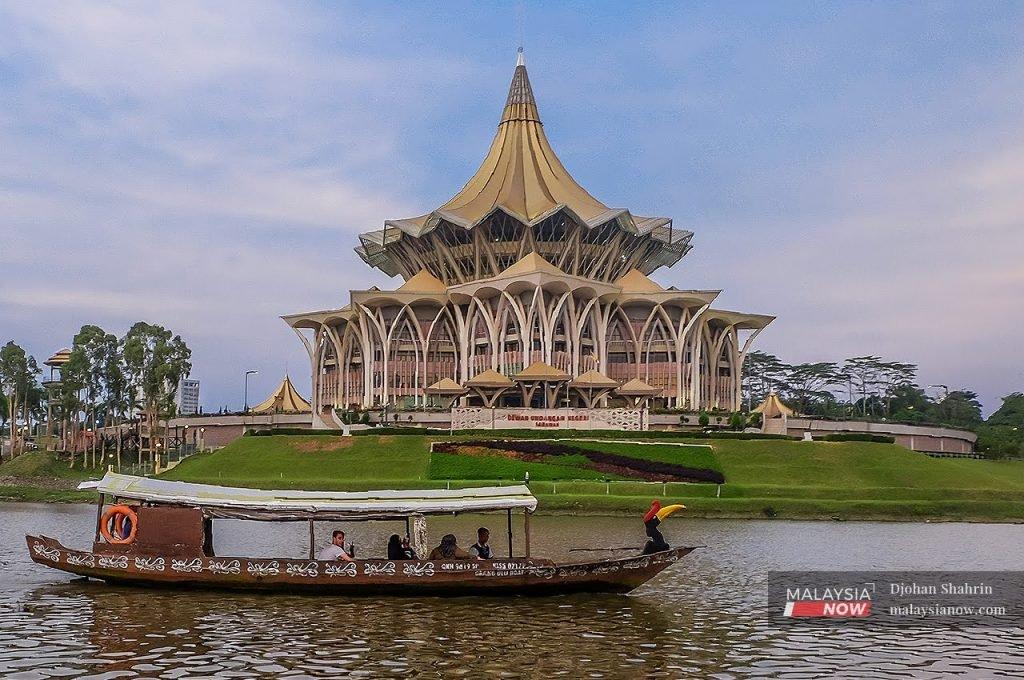Splinter groups to fuel fierce fight in Sarawak polls?
Whether candidates from peninsula-based parties will be able to secure a seat will depend on local sentiment.
With residents in Melaka gearing up for their appointment at the polls booth later this month, across the way in Sarawak, preparations are also underway with a fierce fight expected for all 82 seats in the country’s largest state legislative assembly.
The assembly was dissolved on Nov 3 after the king consented to the revocation of the extended state of emergency, paving the way for the long-awaited Sarawak state election.
Polls must be held within 60 days of this date, and local parties are already doing the spadework ahead of the election which is expected to be held soon after the Nov 20 election in Melaka.
Before the dissolution of the state assembly, Gabungan Parti Sarawak (GPS) had held 68 seats – 47 belonging to PBB, 11 to PRS, seven to SUPP and three to PDP.
On the opposition bench, SUPP splinter PSB had held six seats while Sarawak DAP held five and Bersatu one. There was also one seat held by an independent and one vacant.
This did not reflect the results of the previous state election in 2016 in which Barisan Nasional (BN) had won 72 of the 82 seats.
Then, the four ruling parties – PBB, SUPP, PRS and PDP – had won 67 seats while UPP, another SUPP splinter party which was friendly to GPS at the time and whose candidates had contested under the BN banner, retained its five seats.
The remaining 10 seats were held by Sarawak Pakatan Harapan (PH) – seven by DAP and three by PKR.
But the political tsunami that swept across the country during the 2018 general election saw a number of lawmakers switching allegiance.
The shock defeat of the BN federal government also witnessed the departure of four parties from the state chapter which went on to form GPS in July of that year.
A year later, GPS ally Wong Soon Koh who was UPP president resigned from the Cabinet. PSB at this point was still loyal to GPS although its relationship gradually became more strained.
It eventually parted ways with GPS, taking with it five seats and leaving GPS with 67.
PSB deputy president Jerip Susil who was Mambong assemblyman meanwhile resigned from the party and joined PBB, pushing GPS’ seat count to 68 and leaving PSB with four.
The subsequent collapse of the PH federal government last year saw the three Sarawak PKR assemblymen – Baru Bian, Ali Biju and See Chee How – leaving the party.
Baru and See joined PSB while Ali joined the peninsula-based Bersatu, which only recently spread its wings to Sarawak.
Sarawak PKR thus lost all of its representatives in the legislative assembly while PSB gained two more, pushing its total number of seats to six.
Meanwhile, DAP was left with five seats after losing Pujut and Padungan. The Pujut seat has remained vacant since Dr Ting Tiong Choon, who won it in the 2016 state election, was disqualified over his dual citizenship.
It lost Padungan when its assemblyman Wong Kin Wei quit the party to become an independent.
Multi-cornered fights
With the state election looming around the corner, it remains to be seen if Sarawak’s fragmented opposition will be able to present a united front against GPS.
The scattering of opposition parties can be traced to the 1970s and the breakaway of the Sarawak National Party or SNAP, which gave rise to splinter parties from the Sarawak Progressive Democratic Party (SPDP) to Parti Bansa Dayak Sarawak (PBDS) and then Parti Rakyat Sarawak (PRS).
A power struggle in PRS meanwhile led to the launch of a new party, the Sarawak Workers Party (SWP).
With so many parties seeking to represent the Dayak community, Dayak politics has been in disarray ever since.
The 2016 state election saw three-way fights in 28 constituencies, four-cornered fights in 12 and five-cornered fights in five.
The five-way fights mostly took place in the Chinese-majority seats of Batu Kitang, Bukit Semuja, Dudong, Bawang Assan and Jepak.
The four-way fights took place in the Dayak-majority seats of Opar, Serembu, Sadong Jaya, Balai Ringin, Simanggang, Engkilili, Meluan, Ngemah, Murum, Bekenu, Pujut and Mulu.
With the emergence of new local splinter groups such as Parti Bumi Kenyalang, Gasak – an alliance of local political groups Sarawak People’s Aspiration Party, SWP, leaders from the deregistered PBDS and Sarawak for Sarawakians and the Sarawak Independence Alliance – competition is expected to be stiff in the upcoming polls.
And whether candidates from peninsula-based parties such as PAS and Amanah will be able to secure a seat will depend on local sentiment.
Subscribe to our newsletter
To be updated with all the latest news and analyses daily.
